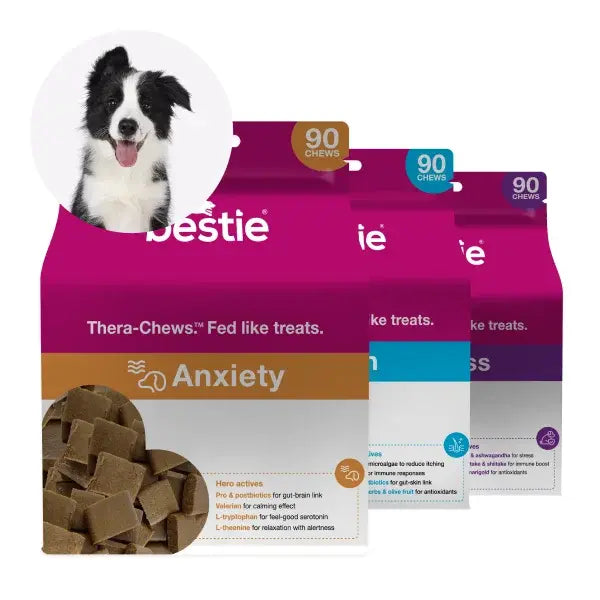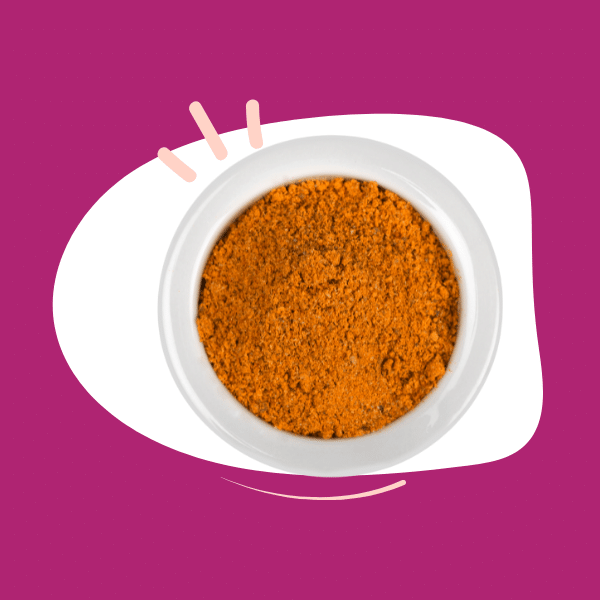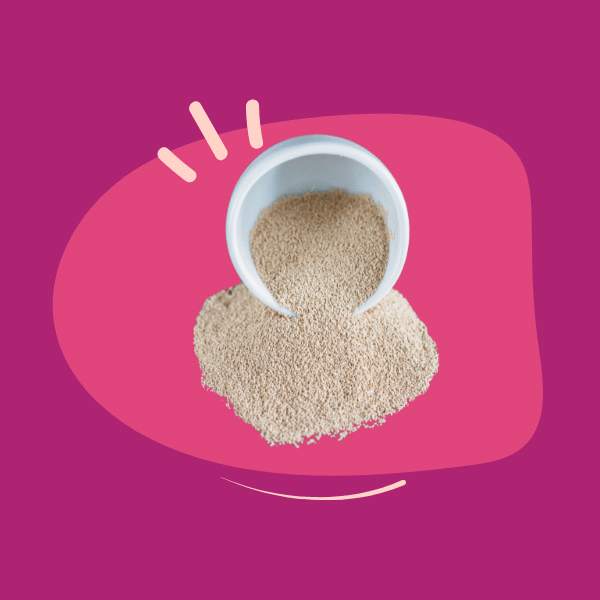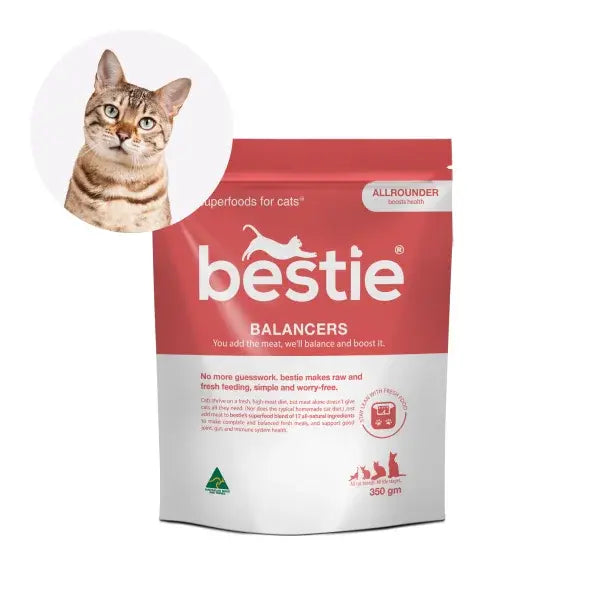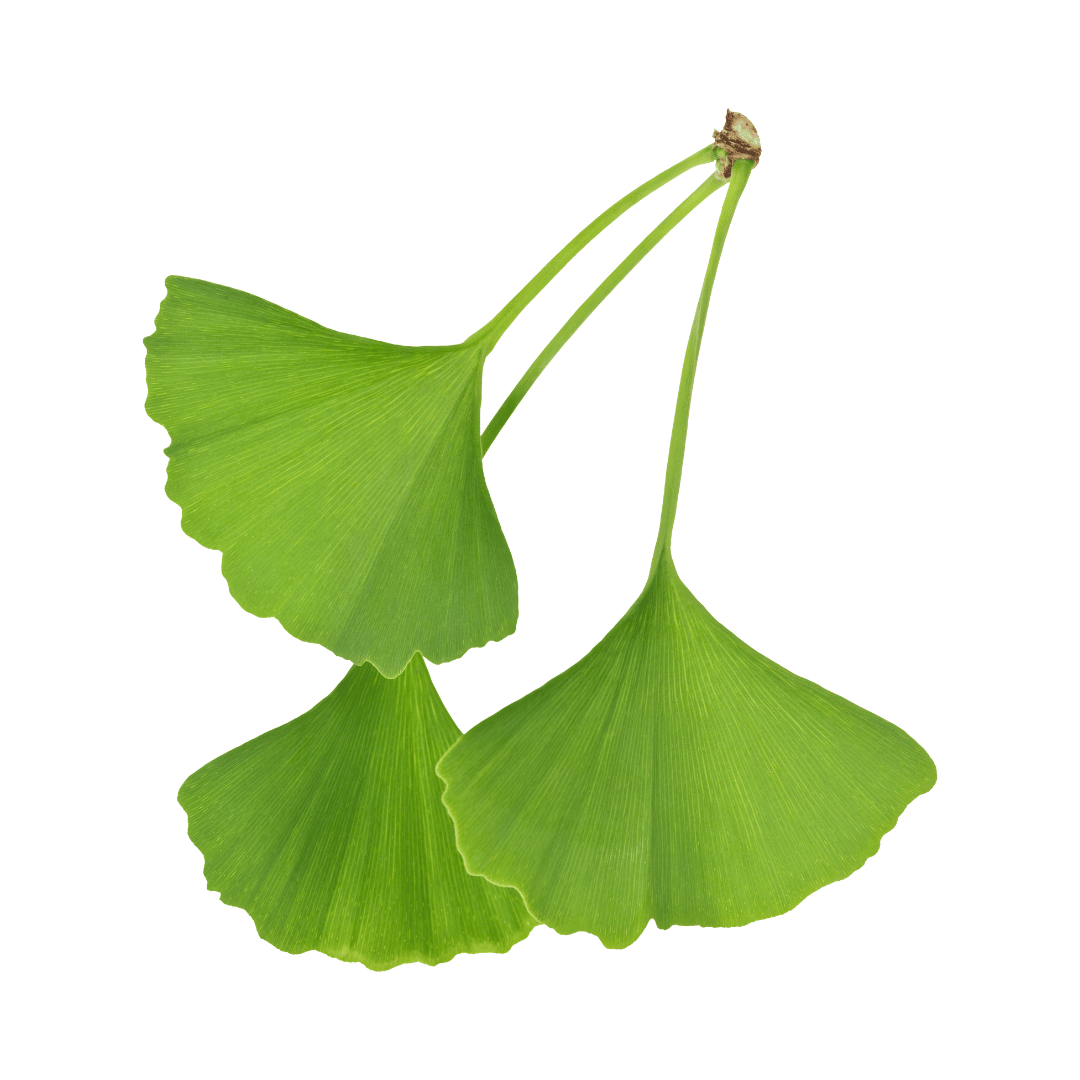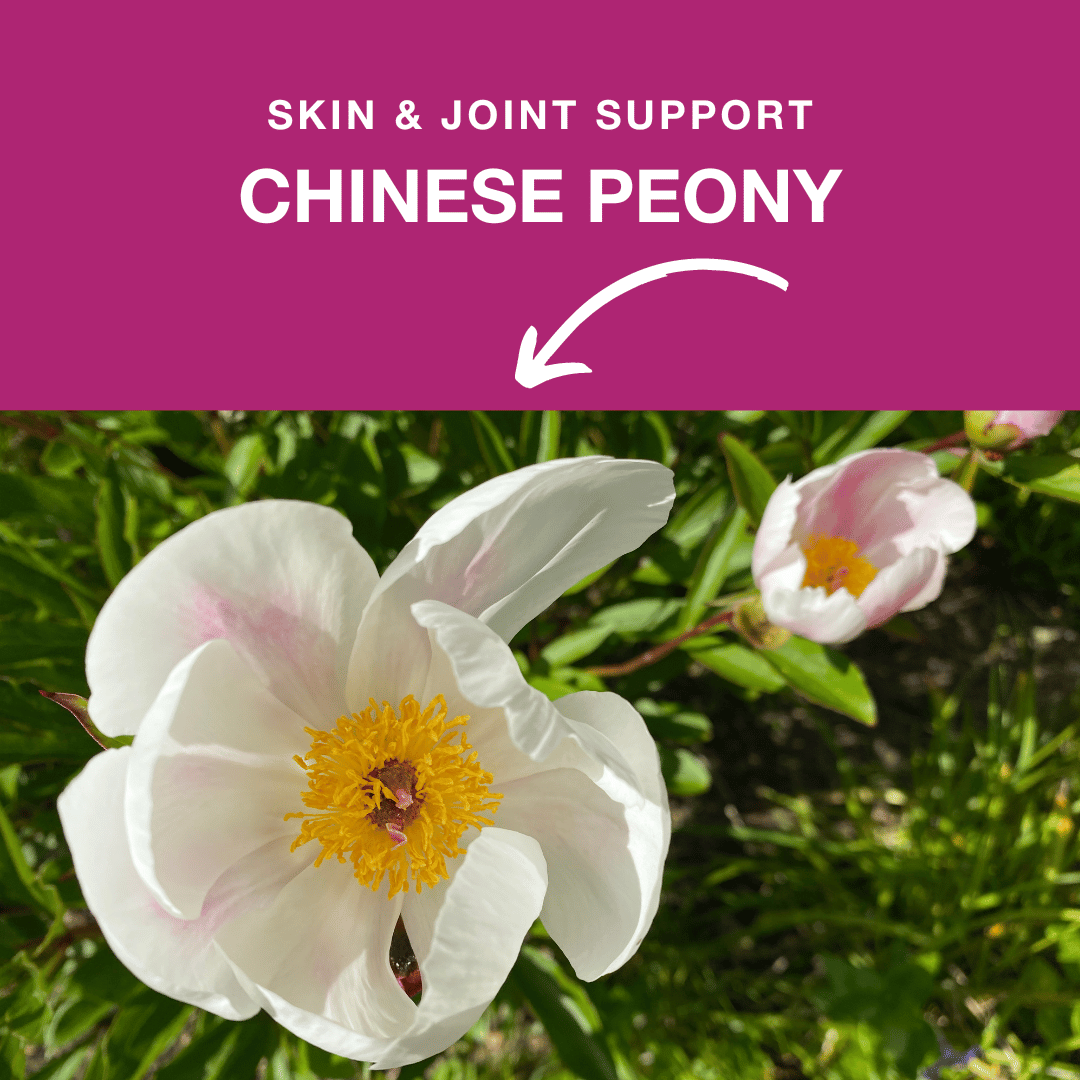Marigold (also called calendula), has long been used in herbal medicine as a topical antiseptic, however the marigold extract has antimicrobial and anti-inflammatory properties. It’s also been shown to promote digestion and alleviate gastrointestinal disorders.
These are some of the reasons marigold is a key ingredient in our daily health supplement for dogs, The Pep-Up.
If your dog has itchy skin, especially at certain times of the year, smelly or itchy ears, sneezes a lot or had an ear infection in the last six months, then their immune system may need a boost. This is what The Pep-Up was designed for. (You can read more about the research under-pinning The Pep-Up here.
You may not know, but there are actually two types of marigolds - French Marigolds (Tagetes patula) and Pot Marigolds (Calendula officinalis). Both types belong to the Asteraceae family. Pot Marigold (Calendula officinalis) is an annual ornamental plant with yellow to orange flowers which are used in the pharmaceutical, cosmetic, and food industries.1
French Marigolds (Tagetes patula) is inedible to humans or pets, but the extract of marigold(calendula) offers many benefits both inside and outside a dog’s body.
The calendula flowers have abundant amounts of flavonoids, triterpenoids, essential oil, and polysaccharides. The flavonoid mixture involves quercetin and isorhamnetin derivatives and has antioxidant activity.
Flavonoids also give marigolds their brilliant colour. Triterpenoid saponins have haemolytic and anti-inflammatory activity. Antitumour and phagocytosis stimulation properties have been reported for the polysaccharide fraction. 2
When applied topically, marigold extract has the following effects:
- Anti-inflammatory activity
- Promotes wound healing
- Prevents acute dermatitis which is a common side effect of irradiation6
- Possesses anti-genotoxic effect7
However, we included marigold extract into The Pep-Up, largely because of its high lutein content. But what is lutein and why is it helpful?
Lutein in Marigold (Calendula) Extract
Lutein is a type of carotenoid pigment and it’s related to beta-carotene and vitamin A. It’s often referred to as the “eye vitamin”. Lutein is one of the major carotenoids in the macula and retina of the eyes.
Functions of lutein
- Filters light - Protects the sensitive tissues of the eyes from sunlight damage
- Promotes the body’s antibody response to a vaccine and humoral immune responses
- Protects skin from Ultraviolet (UV) rays
- Is an essential nutrient that can help prevent cancer, stroke, and heart disease.
How does lutein work?
Lutein has antioxidant and immunomodulatory properties. When a substance is said to be an immunomodulator, it has been demonstrated to restore and repair the imbalance in the immune system.3 This may involve restoring impaired immune system function (imunorestore), improving the function of immune system components by stimulating (immunostimulatory), or by pressing or normalizing abnormal immune reactions (immunosuppressants).4
Dogs are able to efficiently absorb lutein from the diet. When absorbed, circulating lymphocytes take up most of the lutein. Lymphocytes are a type of white blood cell that play an important role in immune system function. There are two categories of lymphocytes: B lymphocytes (B cells) and T lymphocytes (T cells).
Dietary lutein significantly enhances cell-mediated and humoral immune responses in dogs. Also, lutein can increase the antibody response to a vaccine.5
Cell-mediated immunity is an immune response that does not involve antibodies. It occurs inside body cells that are infected and is mediated by T-lymphocytes. T-cells control the response of the immune system to foreign substances. T-cells destroy body cells that have been colonized by viruses or become cancerous.
On the other hand, humoral immunity, also called antibody-mediated immunity, deals with antigens that are freely circulating outside body cells. The antibodies that are produced by the B-cells will neutralize antigens by binding with them, destruction of cells, or by phagocytosis. Encyclopedia Britannica defines phagocytosis as a process by which certain living cells called phagocytes ingest or engulf other cells or particles. is chiefly a defensive reaction against infection and invasion of the body by foreign substances (antigens).
Nutritional composition of Marigold (Calendula) Extract
The biological potential of marigold varies between its flowers, leaves, and roots. Nicotiflorin was identified in the flower extracts only while amentoflavone occurred only in the roots.
The flower extracts showed the highest antioxidant potential while the root extracts were potent inhibitors of cholinesterase and tyrosinase. The leaf extracts have the highest flavonoid content compared to the other parts of the calendula.8
The marigold extract used in The Pep-Up comes from the flowers.
Amentaflavones
Amentaflavones possess antioxidant, anti-inflammatory, anti-aging, anti-cancer, antivirus, and anti-fungal effects. They also exert therapeutic effects on the central nervous system (CNS)and cardiovascular system. Amentaflavones also possess cholinesterase inhibitory properties.9
Nicotiflorin
Nicotiflorin has been reported to have various pharmaceutical effects, such as antioxidant, anti-inflammatory, and neuroprotective effects. It protects the liver against acute immunological and chemical injury, an ability that might be attributed to its antioxidant and immuno-regulation potential.10
Marigold (Calendula) extract for cognitive dysfunction
Cognitive dysfunction is a common age-related issue in senior dogs. One of the possible approaches for the treatment of disorders that affect the nervous system is acetylcholinesterase inhibitors.
Studies have shown that quercetin and isorhamnetin glycosides from calendula flowers,11 as well as amentaflavones from the root extract, possess anti-acetylcholinesterase activity.
Excellent oxidative properties of Marigold (Calendula) extract
Calendula extract is just one of the many plant extracts and plant products that have been shown to possess significant antioxidant properties, scavenging free radicals.
Free radicals are unstable molecules that lack electrons. They damage cell membranes, DNA, and other parts of body cells as they steal electrons from other molecules and in the process damaging the molecules.
Free radicals can be from the environment or generated inside the body during normal metabolism. They have been implicated as an important factor in the development of several serious diseases and conditions such as inflammation, liver disease, diabetes, cancer, neurogenerative disease, and a whole lot of other issues that can shorten the lifespan of pets.
The body possesses an innate mechanism that protects it from free radicals and reactive oxygen species (ROS). But when something compromises this protective mechanism, free radicals and ROS circulating in the body can quickly increase, wreaking damage and paving the way for serious health problems.
With an adequate intake of antioxidants from their diet, dogs are able to combat and neutralise free radicals. By sharing some of their own electrons with the free radicals, antioxidants prevent free radicals from causing damage. Doing so can help break the cascade of events that could have caused damage to other molecules and cells in the body.
Not sure if your dog needs a boost of marigold…and other helpful ingredients in The Pep-Up? Take our quick health quiz to find out.
References:
- Raal, A et al. Analysis of Carotenoids, Flavonoids and Essential Oil of Calendula officinalis Cultivars Growing in Estonia. 2016. https://doi.org/10.1177/1934578X1601100831
- William Charles Evans BPharm BSc PhD DSc FIBiol FLS FRPharmS, ... Daphne Evans BA MA, in Trease and Evans' Pharmacognosy (Sixteenth Edition), 2009.
- Patil, US et al. 2012. Immunomodulators: A pharmacological review. Int J Pharm Pharm Sci 4 (Suppl 1), 30-36
- Dhama, K et al. Effect of Immunomodulation and Immunomodulatory Agents on Health with some Bioactive Principles, Modes of Action and Potent Biomedical Applications. 2015. International Journal of Pharmacology. Volume: 11, Issue: 4 Page No.: 253-290
- Kim, HW et al. Dietary Lutein Stimulates Immune Response In The Canine. 2000. Veterinary Immunology and Immunopathology 74 (315-327).
- Pommier P, Gomez F, Sunyach MP, D'Hombres A, Carrie C, Montbarbon X (2004): Phase III randomized trial of Calendula officinalis. compared with trolamine for the prevention of acute dermatitis during irradiation for breast cancer. Clin Oncol 22(8): 1447–1453.
- Perez-Carreon JI, Cruz-Jimenez G, Licea-Vega JA, Arce Popoca E, Fattel Fazenda S, Villa-Trevino S : Genotoxic and anti genotoxic properties of Calendula officinalis. extracts in rat liver cell cultures treated with diethylnitrosamine. Toxicol In Vitro 16(3): 253–258.
- Gunes,AK, et al.A Comparative Bio-Evaluation and Chemical Profiles of Calendula officinalis L. Extracts Prepared via Different Extraction Techniques. 2020. Journals.Applied Science Volume 10 Issue 17 3390/app10175920
- Yu, Sheng et al. A Review on the Phytochemistry, Pharmacology, and Pharmacokinetics of Amentoflavone, a Naturally-Occurring Biflavonoid. 2017 Feb 16. doi: 10.3390/molecules22020299
- Zhao, Jun et al. Hepatoprotective Effects of Nicotiflorin from Nymphaea candida against Concanavalin A-Induced and D-Galactosamine-Induced Liver Injury in Mice. International Journal of Molecular Sciences 18(3):587
Anti-Acetylcholinesterase Principles of Marigold
(Calendula officinalis) Flowers and Preparations. 2017. Int. J. Mol. Sci., 18(8), 1685



